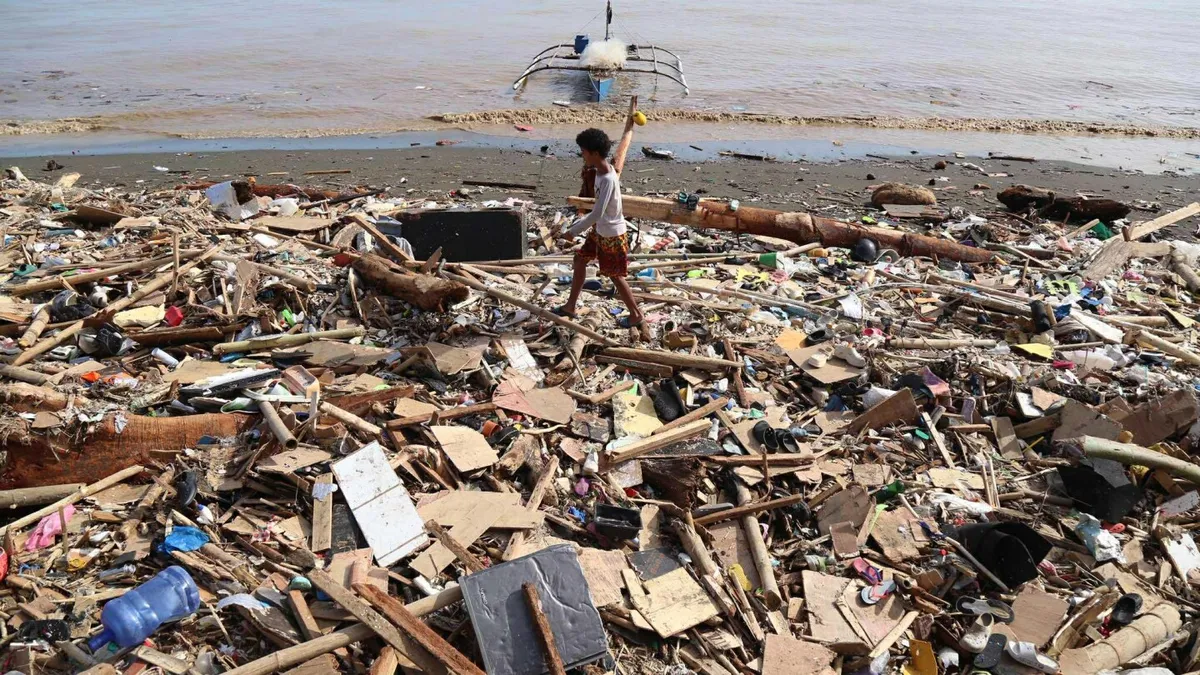
On Thursday, Philippine President Ferdinand Marcos Jr. officially declared a state of emergency in response to the catastrophic impact of Typhoon Kalmaegi, which has resulted in at least 114 confirmed fatalities and left hundreds missing across central provinces. This disastrous event is now recognized as the deadliest natural disaster to strike the Philippines in 2023.
The majority of the deaths reported were due to drowning in flash floods, with 127 individuals still unaccounted for, particularly in the severely affected province of Cebu. The tropical cyclone exited the archipelago on Wednesday, moving into the South China Sea, but its destructive legacy remains. The Office of Civil Defense reported that nearly 2 million people were impacted by the typhoon, and over 560,000 villagers were displaced. This includes almost 450,000 individuals who were evacuated to emergency shelters.
During a meeting with disaster-response officials to evaluate the aftermath of Typhoon Kalmaegi, President Marcos declared a state of national calamity. This declaration is crucial as it facilitates the rapid disbursement of emergency funds and helps mitigate issues such as food hoarding and price gouging. As the nation grapples with the immediate effects of Kalmaegi, officials have raised alerts about another potential tropical cyclone that could evolve into a super typhoon, threatening the northern regions of the Philippines early next week.
Among the fatalities attributed to Kalmaegi, six individuals tragically lost their lives when a Philippine air force helicopter crashed in the southern province of Agusan del Sur. The helicopter, which was en route to provide humanitarian assistance to typhoon-affected provinces, crashed under circumstances that are currently under investigation.
Typhoon Kalmaegi triggered devastating flash floods, causing rivers and other waterways to overflow in Cebu. The flooding inundated residential areas, prompting residents to seek refuge on their rooftops while desperately awaiting rescue. The Office of Civil Defense reported that at least 71 people died in Cebu, with 65 still missing and an additional 69 injured. Nearby Negros Occidental province also reported 62 missing individuals as a result of the flooding.
Cebu Governor Pamela Baricuatro expressed her concerns, stating, “We did everything we could for the typhoon, but unexpected events like flash floods are difficult to manage.” Years of quarrying have exacerbated the situation, leading to the clogging of rivers and contributing to the overflow. Moreover, a recent corruption scandal involving inadequate flood control projects has fueled public outrage and protests, highlighting systemic issues in disaster preparedness.
Compounding the disaster, Cebu was still in recovery mode from a 6.9 magnitude earthquake that struck on September 30, resulting in at least 79 deaths and significant displacement. Residents who lost their homes were relocated to more resilient evacuation shelters after being housed in flimsy tents before the typhoon hit. Fortunately, northern towns that were devastated by the earthquake largely escaped the flood damage caused by Kalmaegi.
In light of the dangerous sea conditions, ferries and fishing boats have been prohibited from setting sail, stranding over 3,500 passengers and cargo truck drivers at nearly 100 seaports. Additionally, approximately 186 domestic flights have been canceled as a precautionary measure. The Philippines, which faces about 20 typhoons and storms annually, remains one of the most disaster-prone countries globally, frequently contending with earthquakes and active volcanoes.
The aftermath of Typhoon Kalmaegi has left the Philippines in a critical state, with the government taking immediate actions to address the crisis and prepare for potential future threats. As the nation mourns the loss of lives and begins recovery efforts, the resilience of its people remains a beacon of hope in the face of adversity.